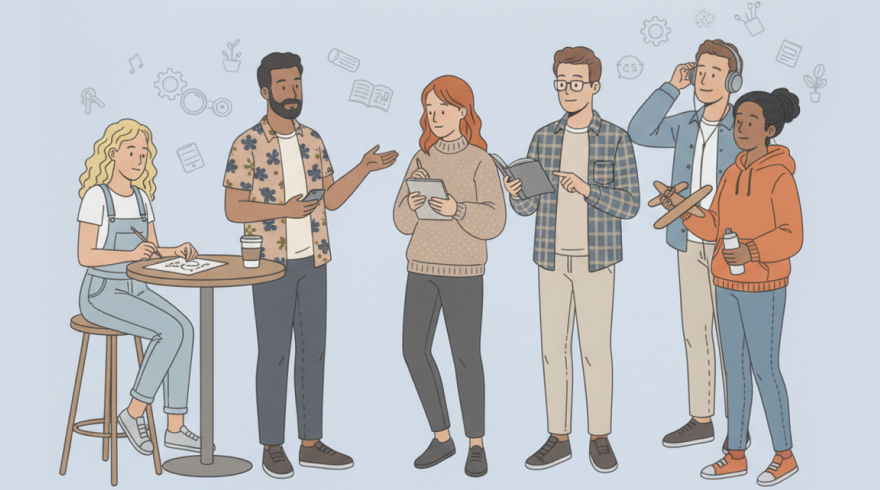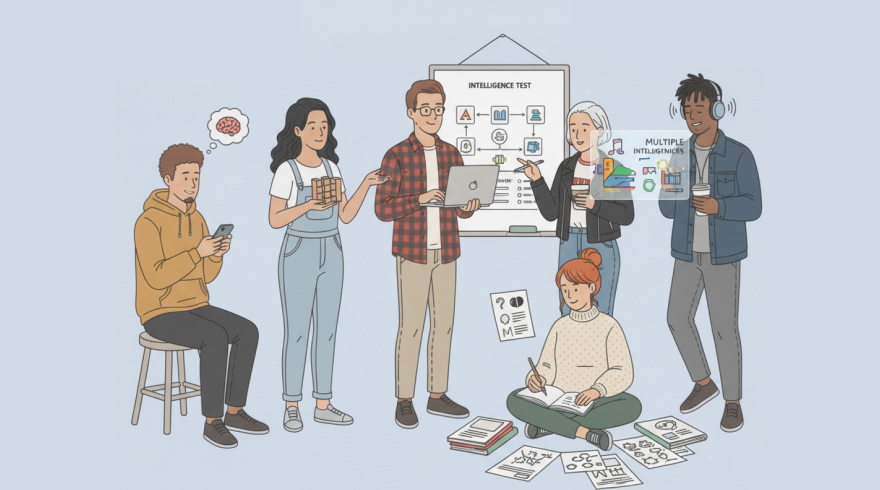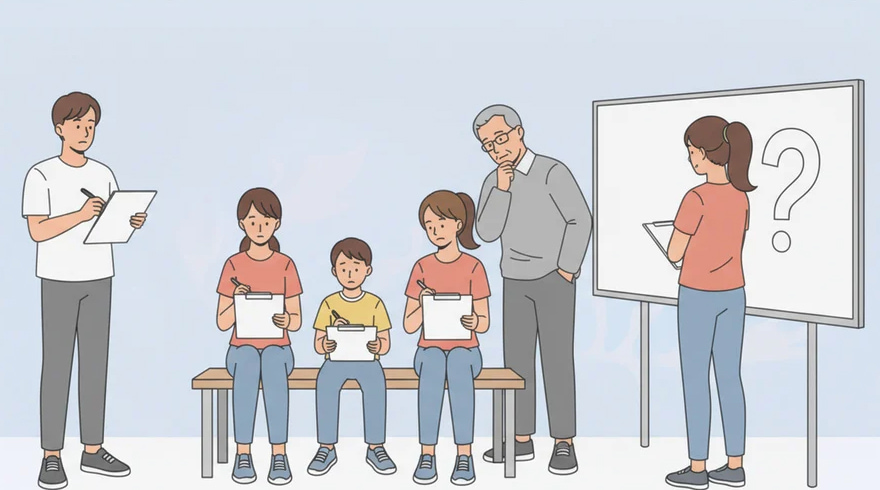The Ultimate Guide to Modern Intelligence Profiling
- 5 November 2025

Understanding the Assessment Landscape
People learn, solve problems, and express talent through distinct cognitive patterns, and recognizing these patterns can change how we study and work. Instead of chasing a single score, contemporary approaches emphasize a mosaic of capabilities that show up in language, logic, movement, music, social intuition, self-knowledge, and sensitivity to patterns in nature. Educators, coaches, and managers now value profiles that reveal strengths and blind spots, because those insights inform better goals and clearer strategies. With that shift, interest has surged in instruments that map personal tendencies across multiple domains, highlighting the value of context, culture, and motivation.
Within classrooms and coaching settings, the multiple intelligences test is often used as a reflective inventory rather than a ranking tool, enabling learners to notice emerging strengths without the pressure of high-stakes evaluation. When used thoughtfully, such an inventory prompts richer conversations about practice routines, learning environments, and feedback loops. It also nudges users to replace vague self-judgments with specific observations, so improvement plans become concrete and achievable. The most helpful versions blend clear language with scenario-based prompts, producing results that are easy to interpret and apply in everyday settings.
- Highlights practical strengths that can be applied immediately
- Encourages growth through targeted practice instead of broad labels
- Supports personalized learning plans and career exploration
- Improves communication between teachers, mentors, and teams
Where the Idea Came From and How It Evolved
Before profile-driven learning took off, many people assumed that a single measure could capture what it means to be smart. The landscape changed when a more ecological view of human ability emerged, framing intelligence as a cluster of interrelated capacities that develop through experience and culture. Over time, schools piloted new lesson designs, musicians and athletes refined training regimens, and workplaces experimented with roles that fit different minds. This movement broadened the conversation, positioning cognitive diversity as an asset rather than a deviation to be corrected.
In academic history, the label Howard Gardner's multiple intelligences test is shorthand for assessments based on his theory, even though the original scholar did not author a single standardized instrument. The theory inspired a family of inventories that translate core ideas into practical questionnaires, rubrics, and reflective checklists. As the field matured, responsible practitioners paired results with evidence-based study strategies, performance feedback, and iterative goal setting. That combination of theory, data, and practice has helped learners turn insight into durable skill growth across varied contexts.
- From theory to practice: classroom pilots and learning design
- From pilots to policy: inclusion, differentiation, and choice
- From policy to culture: valuing diverse problem-solving styles
Benefits for Learning, Work, and Everyday Life
Knowing your cognitive patterns can transform how you approach complex tasks, from writing reports to troubleshooting code or coaching a team. Instead of trying random tactics, you can align methods with strengths, then carefully shore up weak spots through deliberate practice. This reduces friction, increases motivation, and makes progress measurable. People also become more empathetic colleagues and teachers when they understand that peers may process information differently, which promotes clearer collaboration and fewer misunderstandings.
For many career changers, an intelligence type test functions like a compass that points toward daily tasks they can do with ease and joy, while also signaling areas that might require extra scaffolding. Students benefit by tailoring note-taking, scheduling, and practice drills to match how they retain and retrieve information. Managers get better at distributing responsibilities, designing skill sprints, and mentoring new hires. Families use insights to design home routines that support homework, hobbies, and rest in harmony rather than competition.
- Personalized study methods that fit how you remember and apply ideas
- Career alignment through role crafting and skill-focused upskilling
- Team clarity via complementary strengths and shared language
- Confidence through measurable, incremental wins
Taking the Assessment and Interpreting Your Profile
Start by setting a calm environment and committing to honest responses, because accuracy depends on authentic self-observation. Look for tools that explain their purpose, scoring, and limitations up front, and avoid quizzes that promise instant transformation. After completing an inventory, review each domain with examples from your own experience, then summarize patterns in a short reflection. Converting results into small experiments is the best way to validate insights in the real world.
For quick self-discovery, a reputable free multiple intelligence test can be an accessible on-ramp to deeper exploration when paired with thoughtful reflection. If possible, repeat the process after a period of practice to see what changed, because self-perception evolves as you gain skill. Keep notes on which techniques worked, which failed, and why, so your next iteration can be sharper and more targeted.
When selecting an inventory, prompts that test multiple intelligence areas should feel concrete, contextual, and behaviorally anchored to avoid shallow generalities. Scales should include reliability notes, sample items, and clear guidance for follow-through. Treat scores as starting points rather than verdicts, and always compare recommendations to your lived experience to keep the process grounded.
- Prepare: quiet space, honest mindset, time buffer
- Complete: respond to typical behavior, not idealized habits
- Reflect: connect results to real episodes and outcomes
- Act: run small experiments and track evidence
Comparing Modalities and Strategies
Different profiles suggest different ways to learn, collaborate, and perform under pressure. Matching strategies to a dominant or developing domain can markedly improve retention and transfer. The following table summarizes common modalities with practical study and work approaches, giving you a quick reference you can adapt to your context. Use it to design weekly routines, pick tools, and plan practice sessions that respect how your mind prefers to operate.
| Intelligence | Strength Markers | Effective Strategies |
|---|---|---|
| Linguistic | Wordplay, storytelling, precise vocabulary | Write summaries, teach concepts aloud, create glossaries |
| Logical–Mathematical | Pattern detection, reasoning, systems thinking | Work through proofs, build flowcharts, run experiments |
| Spatial | Mental imagery, mapping, design sense | Sketch diagrams, use mind maps, prototype visually |
| Musical | Rhythm, pitch, auditory memory | Set concepts to beats, use sound cues, analyze structure |
| Bodily–Kinesthetic | Hands-on skill, coordination, tactile learning | Act out processes, build models, simulate workflows |
| Interpersonal | Empathy, collaboration, social inference | Study groups, peer teaching, role negotiation |
| Intrapersonal | Self-awareness, reflection, goal alignment | Journaling, values mapping, solo projects |
| Naturalist | Classification, observation, ecological thinking | Field notes, pattern logs, data collection |
| Existential | Big-picture inquiry, meaning-making | Debates, ethical cases, long-horizon planning |
Reading across models highlights how a different types of intelligence test may privilege certain domains while overlooking others, so it pays to cross-check advice with your personal evidence. When you notice mismatches, adjust your method and retest strategies for a better fit. Over time, your toolkit will converge on techniques that deliver results consistently.
From Results to Action: Practical Experiments
Insight is valuable only if it leads to sustained improvement, so convert findings into small, renewable experiments. Choose one domain to amplify and one to support, and then craft weekly routines that blend strength-based practice with skillful compensation. Keep friction low by using tools you already like, and schedule brief review sessions to reinforce progress. Celebrate wins publicly to lock in motivation and invite constructive feedback from peers or mentors.
To move from insight to action, results aligned with a Gardner multiple intelligence test can be translated into learning experiments across a week or a semester, making growth visible in calendars and checklists. For example, a linguistically strong designer might narrate design rationales, while a spatially strong writer might storyboard articles before drafting. The point is to translate tendencies into repeatable tactics that improve outcomes and reduce stress.
- Define a single measurable goal for the next seven days
- Choose one strength-based tactic and one support tactic
- Schedule two short review windows to reflect and adjust
- Log concrete evidence: time-on-task, errors fixed, concepts mastered
How to Choose a Trustworthy Instrument
Quality varies widely in this space, so treat selection as a research task rather than a quick click. Look for transparent methodology, clear construct definitions, and evidence of reliability and validity. Credible tools explain what their scales do and do not measure, and they offer guidance for responsible use. Community reviews, white papers, and sample reports can reveal whether a tool supports meaningful action or just offers generic platitudes.
When vetting tools, you will find that the phrase Gardner intelligence test is applied to a wide variety of questionnaires with uneven quality controls, so read the fine print before drawing conclusions. Makers should disclose who created the inventory, how items were developed, and what populations were used for testing. Absence of such details is a red flag that suggests more marketing than science.
Before committing to a platform, confirm whether the publishers compare scales to other types of intelligence test frameworks and report reliability transparently, because responsible comparisons show whether scores behave as expected. If a vendor avoids methodological questions or oversells precision, consider looking elsewhere. Your time and effort deserve instruments that respect evidence and user agency.
- Method transparency: item design, sampling, analysis
- Clear reporting: scale definitions, score interpretation, cautions
- Actionable advice: concrete strategies linked to results
- Ethical use: privacy protections and informed consent
FAQ: Common Questions Answered
Should schools use a single inventory to place students in tracks?
Placement should never rely on one snapshot, because talent grows with practice and context. Educators can gather evidence from projects, observations, and portfolios instead of enforcing rigid categories. Parents sometimes ask whether a school should adopt a 7 intelligences test for placement decisions, and the short answer is no, since multifaceted evaluation is safer and more equitable.
Can I trust no-cost quizzes, or do I need a paid product?
Cost alone does not determine quality, and a well-designed free tool can be perfectly serviceable if it explains its limits and methodology. Budget-conscious learners often wonder if a multiple intelligences test free option can be accurate, and the honest answer is that design matters more than price, especially when paired with thoughtful reflection and follow-up practice.
Is there an official version endorsed by the original theorist?
No single official version exists, and responsible publishers acknowledge that reality openly. Education bloggers frequently describe the Gardner multiple intelligences test as a doorway to self-awareness, yet instruments vary, so users should evaluate evidence, clarity, and practical guidance before adopting any specific questionnaire.
Do results change over time, or are they fixed?
Profiles evolve as you gain experience, switch environments, and develop new skills through deliberate practice. Retesting after periods of focused training can reveal shifts that help you recalibrate study methods or work strategies. Treat your profile as a living document, not a permanent label.
How should teams use profiles without stereotyping colleagues?
Use results to expand collaboration options, not to box people in. Rotate roles, cross-train skills, and solicit feedback to avoid rigid assumptions about what each person can do. The healthiest cultures balance respect for individual strengths with opportunities to stretch beyond comfort zones.
Latest News
-
![The Definitive Guide to MI Assessments for Personalized Learning and Growth]() The Definitive Guide to MI Assessments for Personalized Learning and Growth Find Your Learning Style With Test Get Started Understanding the Framework Behind MI Assessments Howard Gardner’s perspective on human capability reframed how educators, coaches, and employers think about talent. Instead of assuming a single, uniform score captures a...
The Definitive Guide to MI Assessments for Personalized Learning and Growth Find Your Learning Style With Test Get Started Understanding the Framework Behind MI Assessments Howard Gardner’s perspective on human capability reframed how educators, coaches, and employers think about talent. Instead of assuming a single, uniform score captures a... - 11 November, 2025
-
![Free Multiple Intelligence Testing: A Complete Guide to Smarter Learning Decisions]() Free Multiple Intelligence Testing: A Complete Guide to Smarter Learning Decisions Find Your Learning Style With Test Get Started Understanding Multiple Intelligences in Modern Learning People learn in wonderfully different ways, and recognizing that diversity helps educators, students, and professionals make better choices. The multiple intelligences fr...
Free Multiple Intelligence Testing: A Complete Guide to Smarter Learning Decisions Find Your Learning Style With Test Get Started Understanding Multiple Intelligences in Modern Learning People learn in wonderfully different ways, and recognizing that diversity helps educators, students, and professionals make better choices. The multiple intelligences fr... - 10 November, 2025
-
![Kolb’s Experiential Learning: A Complete Guide to Styles, Tools, and Benefits]() Kolb’s Experiential Learning: A Complete Guide to Styles, Tools, and Benefits Find Your Learning Style With Test Get Started Foundations of Experiential Learning and Why Styles Matter Experiential learning explains how people transform experience into knowledge by cycling through doing, reflecting, conceptualizing, and experimenting. Rooted in cogni...
Kolb’s Experiential Learning: A Complete Guide to Styles, Tools, and Benefits Find Your Learning Style With Test Get Started Foundations of Experiential Learning and Why Styles Matter Experiential learning explains how people transform experience into knowledge by cycling through doing, reflecting, conceptualizing, and experimenting. Rooted in cogni... - 7 November, 2025



